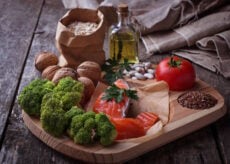See How to Store Produce to Keep It Fresher, Longer
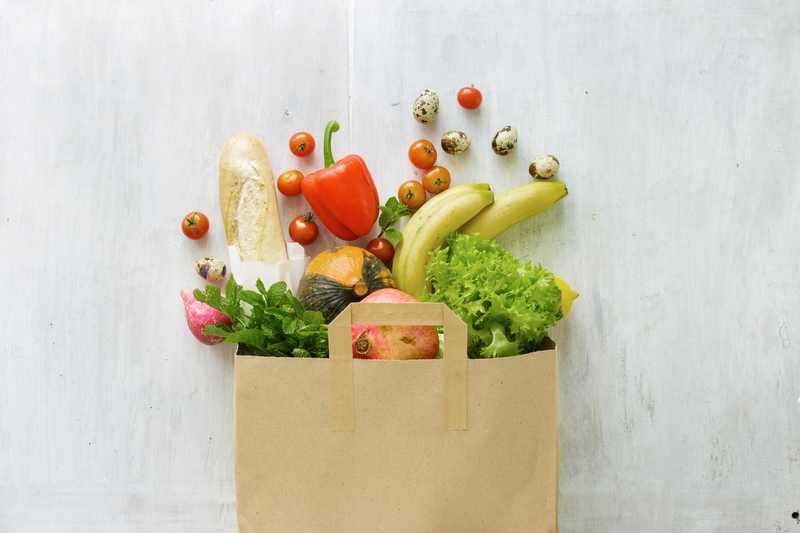
Let’s be honest: fruits and vegetables are expensive. And, they’re also highly perishable. Who wants to waste good money on food that goes bad before you even have a chance to eat it? Not us! Fortunately, learning how to store produce properly can help extend its life—so you can enjoy fresher foods for longer, and not feel like you’re tossing your hard-earned cash directly into the compost bin.
Of course, the first concern is safety. You want to ensure your foods won’t make you or your family sick. But it’s also important to eat foods that taste good, so when we look at how to store produce, it’s important to also consider maintaining optimal freshness.
Most produce is best left unwashed and in its original packaging. We will, however, include any exceptions below. Of course, if you purchase your produce from the farmer’s market or, better yet, bring it in from your own garden, you’ll often want to place it in a container or bag before storing it. Depending on the type, you may want to put it in an airtight container or a reusable vegetable storage bag.
Once you get home with your fresh produce, though, it’s a good idea to remove any twist ties, bands, or other fasteners to help prevent your produce from damage or bruising.
It’s also a good idea to give your fruits and veggies room to breathe. Place them loosely in the fridge, on the counter, or in the pantry, and store fruits and vegetables away from each other. The reason for this is because many fruits release ethylene gas. This gas can cause foods to ripen or even rot faster, especially with high-ethylene-gas-emitting produce like apples, avocados, bananas, stone fruits, and tomatoes.
Finally, before eating any fruits or vegetables, don’t forget to wash them. Yes, that includes even those that come in their own packaging (e.g., bananas, avocados, and melons) to protect yourself from foodborne-illness-causing bacteria. The bacteria can easily transfer from the knife or cutting board into the flesh you consume. And while it may be rare to get sick this way, it can happen. Plus, rinsing everything well in cold water will remove any dirt and grit that isn’t very nice to eat.
Now, let’s get to it—where to store each food as well as how long it will typically maintain optimal freshness. To help keep it easier to organize, we’ll go in alphabetical order by location.
One last note: as a general rule, the softer the food, the sooner you’ll want to use it. For example, prioritize eating lettuce and other greens as well as cucumbers and peppers before worrying about potatoes or cabbage.
How to Store Produce to Keep it Fresher
Some produce does better at room temperature. Others do better in dark, cool pantries. But the first place we’ll go to in the kitchen is the fridge. These foods will maintain optimal taste and freshness for longer in the good ol’ icebox.
Produce Best Stored in the Fridge
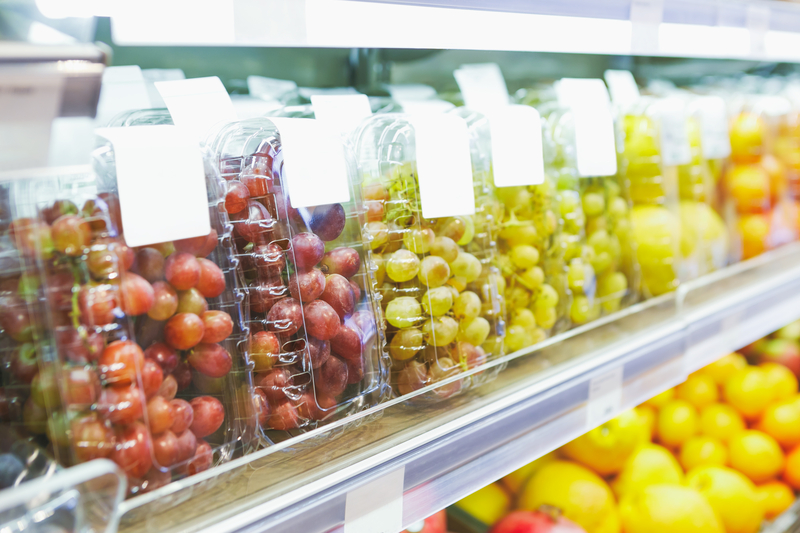
Apples: up to 3 weeks to a month. Store them separately, away from other produce, as apples release ethylene, which can speed up ripening, which means those might not stay as fresh. Apples can also be stored in a cool pantry in a paper-lined basket or box, away from potatoes and onions.
Apricots: up to 5 days. If they aren’t quite ripe, though, leave them in a paper bag on the counter until they feel soft and smell, well…apricot-y.
Artichokes: up to 1 week with a little water in an airtight container. (Cooked artichoke hearts can also be stored for up to eight months in the freezer.)
Arugula (in a bag or plastic container): watch the expiration date on the packaging as bacteria can begin to develop even on leaves that still look okay. Arugula by the bunch can last up to 5 days—just wrap the roots in a damp paper towel before placing it in a container or bag.
Asparagus: only 3 days. To help it stay as fresh as possible, trim the ends and wrap the spears in a paper towel before placing in a container or bag or, better yet, place your trimmed asparagus upright in a glass of water and cover. If the water starts to get cloudy, it’s time to rinse and replace the water.
Avocados (ripe): again, only 3 days. If they aren’t ripe yet, leave them at room temperature in a bag until they’re soft. To help it get ripe even faster, you can place a banana in the bag with the avocado. Once ripe, place the avocados in the fridge. But wait until ripe as putting them in the refrigerator too soon can halt ripening, so you’ll never be able to enjoy it.
Once avocados are cut, you can store them in the fridge. To help prevent oxidation (and browning), leave the pit in and sprinkle with a touch of lemon juice.
Beet Roots: 3 weeks. Immediately when you get home, remove the beetroots from the tops or leaves before storing, but don’t wash them. Then store them in your crisper until you’re ready to eat them.
Beet Tops: up to 3 days.
Bell Peppers: 5 days to 1 week. Green peppers tend to last a little longer than red, yellow, or orange peppers. To help them last as long as possible, store them unwashed as moisture can lead to early rot. Wash them only right before use.
Berries: just a couple of days, so eat them quickly. To help them last a little longer, they can be spread out in a single layer on a paper towel and stored in the coldest part of the fridge. Better yet, before storing, rinse berries with a solution of distilled white vinegar and water. And make sure you pick out any that look moldy or damaged to prevent the spread of mold. Then gently dry them before placing in the fridge. For berries that come with tops (e.g., strawberries), leave them intact to help them last longer.
If you don’t think you’ll get to them in a day or two, no problem. Berries freeze well. Just gently rinse them, allow them to air dry, and lay them out in a single layer on a baking sheet. Allow them to freeze for at least 4 hours or overnight before transferring them to a container or bag. They’ll last for up to a year in the freezer and can be added to smoothies, baked goods, oatmeal, etc.
Bok Choy: 3 days.
Broccoli and Broccoli Rabe: 1 week. Remember that broccoli is considered a cold-weather vegetable. So, cover it with a damp paper towel in the crisper to help it stay crisp, fresh, and cool.
Brussels Sprouts: 1 week or more. Keep your sprouts unwashed and in their original bag for best results.
Cabbage: 2 weeks (savoy and napa varieties can only be stored for around 1 week). Again, store it uncut until it’s time to use. If you purchase it cut or are using it for more than one recipe, tightly wrap or bag it for storage.
Carrots: 2 weeks or more as long as it’s stored in a cold, dark, dry place. If you will be snacking on carrots throughout the week, you can also wash and cut them and store in a container covered with water. That way, they will stay firm and ready to eat. Do, however, change the water regularly—at least every two to three days.
Cauliflower: 1 week. Leave it in the plastic it came in and store it with the stem side up. This way, the head won’t collect moisture, which can lead to rot. And again, keep it whole as cut cauliflower doesn’t last as long.
Celery: 2 weeks, but remove it from its plastic wrapping and store it in aluminum foil instead. This is because celery releases ethylene gases (which accelerates the breakdown process). You can also keep washed and cut celery in a container of water. Again, if you do so, remember to change the water regularly.
Chard: 3 days.
Cherries: store in an open bag or bowl for up to 3 days. They might still look okay after three days, but cherries start to lose their sweetness after a few days.
Chili Peppers: up to 2 weeks if fresh and up to 4 months if dried and kept in an airtight container.
Collard Greens: 5 days.
Corn: up to 3 days but is honestly best the day you buy it. Remember to store it un-shucked.
Cranberries: up to 1 month.
Endive: 5 days.
Fennel: 1 week.
Ginger: up to 3 weeks. If you aren’t going to use the whole root, ginger also freezes well for up to six months. Plus, ginger is easier to peel and grate once frozen.
Grapes: up to 1 week, but they’re likely best in the first few days. Leave them in an uncovered bowl or well-ventilated bag. Again, you’ll only want to rinse them right before eating rather than before storing to prevent them from going bad prematurely.
Green beans: 1 week.
Herbs (fresh):
- basil, cilantro, chives, and tarragon can last 3 days
- parsley and mint can go a little longer to 5 days.
They can be stored well either dry and bagged or in a glass of water. If you choose to store them in water, trim the ends and rinse well before placing in a jar in the fridge like a lovely bouquet. Woody herbs like rosemary and thyme can also be stored in the refrigerator for up to 2 weeks.
Jicama: 1 week.
Kale: 3 days.
Kiwis: up to a month. Don’t refrigerate, though, unless they’re completely ripe. If you leave them on the counter after they’re ripe, you’ll want to eat them within a few days.
Leeks: 1 week; cut off the dark green tops first to be composted. Then store the intact roots in the fridge for later use.
Lettuce (and other leafy greens): 5 days for a full head for most varieties. Iceberg, however, can last up to two weeks. For bagged or boxed lettuce, use the expiration date on the package as your guide. For best results, store them away from moisture in the crisper drawer. You can store washed lettuce. Just make sure it’s thoroughly dried before storing it in a container or bag with a paper towel to continue drawing away moisture. You can even keep your lettuce in a salad spinner in the fridge. Once the excess water has been removed (via spinning), lettuce can last even longer.
Mangos: 4 days; if they aren’t yet ripe, they can be stored in a paper bag at room temperature until soft.
Mushrooms: 1 week. Remove from the container they typically come in and store in a paper bag for best results.
Mustard greens: 3 days.
Okra: 3 days; best if stored in a paper bag.
Parsnips: 1 month; keep them well wrapped to help them last this long.
Pears: 5 days; again, only put pears in the fridge after they’re ripe. Otherwise, leave them in a paper bag on the counter until they’re soft. Once sliced or cut, sprinkle them with lemon juice to help prevent browning.
Peas: up to 4 days; keep them in the pods until time to prepare.
Plums: store in an open bag or bowl for up to 3 days. They might look okay after three days, but plums start to lose their sweetness after a few days. If they aren’t quite ripe (as shown by their soft, silvery coating), leave them on the counter for a bit.
Pomegranates: whole poms can last up to 3 weeks; seeds, however, can only last around 3 days in an airtight container.
Radishes: up to 2 weeks but may be at their best crispness and flavor in the first 3 days. Like beets, they do best if the leaves are removed before storing.
Rhubarb: 1 week. Remember not to eat the leaves, which can be toxic in large amounts.
Rutabaga: while rutabaga will last up to a week in the pantry, you can extend the life for up to 2 weeks in the fridge.
Scallions: 5 days.
Summer Squash, like zucchini, crookneck squash, and pattypan squash, last a good 5 days in the fridge when stored in an airtight container in the crisper.
Turnips: 2 days; again, store the leaves separately and eat any leaves within 3 days.
Watermelon: can last a full week if whole but only 2 days once cut. If your watermelon doesn’t fit in the fridge, it can also be stored in a cool pantry.
Produce Best Stored on the Counter
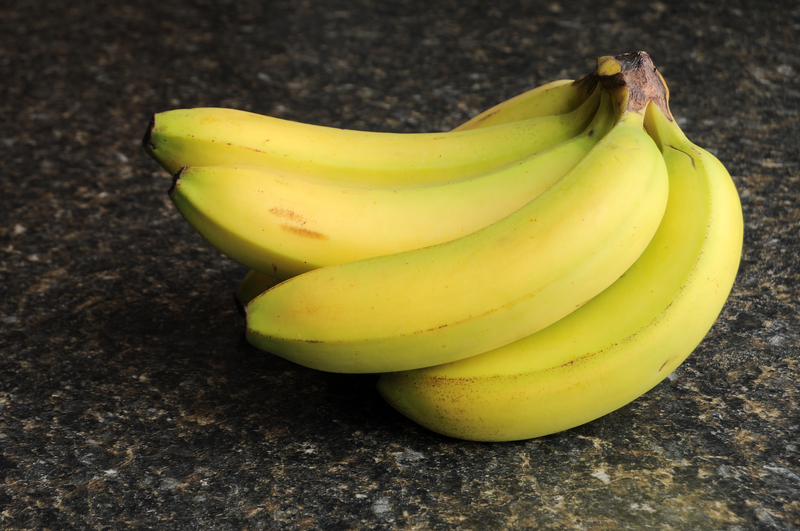
Some food does better at room temperature. For example…
Bananas: leave bananas in a pretty fruit bowl (or just on the counter) for up to 5 days. If you like your bananas cold or want to extend their lifespan a little more, you can store them in the fridge. Just make sure they’re fully ripe, as putting unripe bananas in the fridge can prevent them from ripening. If they do start to look darker and softer, don’t just toss them. Instead, peel them and place them in a freezer-safe container and freeze to add to smoothies, baked goods, or other recipes for the next two or three months or even longer, as long as they don’t get soft, dark, and gooey.
Citrus Fruits (e.g., oranges, grapefruit, clementine, lemons, limes, etc.): Look for the most fragrant fruit before purchase as citrus doesn’t ripen after it’s picked. Once home, store in your fruit bowl at room temperature, but keep it away from direct sunlight. It will last up to a week. If you won’t be eating it that soon, you can transfer it to the fridge, where it can last up to three weeks.
Cucumbers: This is one veggie that doesn’t prefer the cold, and temps below 50 degrees can lead to a loss of flavor and crispness. It can be stored at room temperature for about 5 days. If you just have to keep your cucumbers cold, store them on the top shelf near the front of the fridge as this is where it’s warmest.
Eggplant: 5 days on the counter as cold temperatures can negatively affect the texture and flavor. However, you’ll want to keep your eggplant away from other produce, especially fruits that produce ethylene gas.
Melons (e.g., cantaloupe or honeydew): 5 days if whole. Again, if the melon isn’t yet ripe, you can leave it in a paper bag at room temperature until it’s ready. Wash the outside of the melon well before slicing, so you don’t transfer bacteria from the rind to the flesh. Once cut, move the melon to the fridge for up to 3 days before consuming.
Nectarines, Peaches, and Apricots: up to 5 days; keep them in a cool spot in the kitchen, away from direct sunlight. Avoid leaving them in the fridge, however, as the refrigerator can dehydrate the refreshing juices from these fruits.
Pineapple: can last 5 days on the counter as long as it’s whole; once sliced, however, it’s time to move it to the fridge for up 3 days. Make sure it’s kept in an airtight container, so it doesn’t dry out.
Tomatoes: while tomatoes are often stored in the fridge, they are best left on the counter out of direct sunlight for up to 3 days. To help unripe tomatoes ripen, keep them in a paper bag. Keep them on the counter as the cold from the fridge can make them soft and mushy.
Produce Best Stored in the Pantry
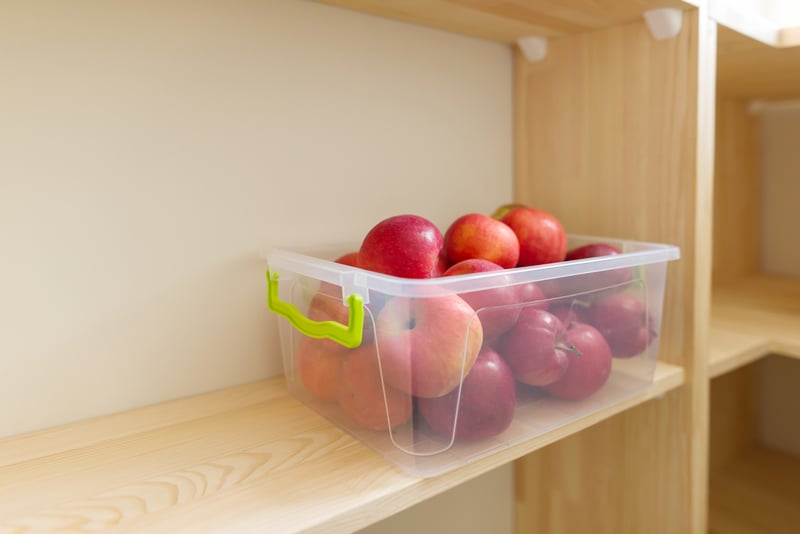
Some foods do best in a cool, dry, dark environment but don’t need to be kept cold. These foods are best stored in a pantry:
Garlic: can last a good two months as long as air circulates around it. If you don’t have a pantry, it can also be stored on a cool spot on your counter. Garlic is one you don’t want to keep in the fridge as the cold can negatively affect the texture.
Onions: if left in a cool, dark place (such as a pantry) with air circulating, onions can last up to 2 months. Cut onions can be moved to the fridge and can remain fresh up to 4 days. Whether in the pantry or the refrigerator, keep onions away from other produce as they can easily share their fragrance and alter the taste of neighboring foods.
Potatoes: another food that likes a cool, yet not cold, dark place, potatoes of all varieties (including sweet) can last 2 to 3 weeks. Again, make sure they get plenty of air circulation. But don’t store them with the garlic or onions as the gasses from those can encourage potatoes to sprout.
Shallots: 1 month, as long as they have good air circulation.
Winter Squash (e.g., acorn, butternut, and spaghetti squash) lasts 3 months as long as it’s whole. Once cut, move it to the refrigerator, which will last a few days to a week.
How to Store Produce: A Wrap Up
Vegetables and fruits are at the center of just about any healthy diet, but they can be costly, especially if you choose organic produce. It’s also at its best when at peak freshness. Now, with the list above, you can adequately store a rainbow of nutrition in your fridge, on your counter, or in your pantry, so it lasts longer and stays fresher.
If you don’t think you’ll be able to eat all your produce before it goes bad, you can probably freeze it. Some foods can just be sliced and put into a bag for freezing. Others may need to be blanched first (i.e., put into boiling water or steamed briefly before dunking in ice water). There are other foods, however, you should never freeze.
What if you notice your greens are wilting or your produce is deteriorating but hasn’t yet gotten spoiled or slimy? You may still be able to revive it by:
- Soaking herbs, leafy greens, or other items in icy water for around 15 minutes. To help them absorb even more water and become crisper, you may want to slice them first.
- Using herbs and greens in pesto or creating a green salsa or sauce.
- Sautéing them or turning them into soup or stock.
- If you have a mix of winter squash, some apples, or pears, you can also create a tasty apple sauce.
- Finally, if the produce is just too far gone (i.e., moldy and sad), gratefully add it to the compost pile where it can return to soil to help nurture future plants.



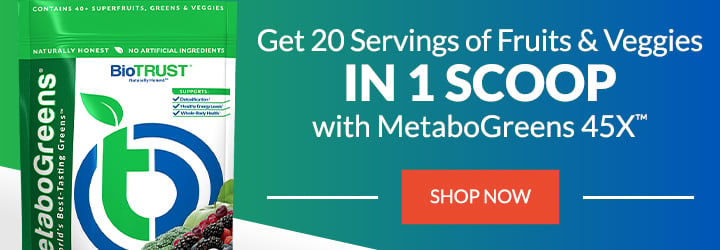



 7 Signs Your Body is Seriously Low on Collagen (not just wrinkles)
7 Signs Your Body is Seriously Low on Collagen (not just wrinkles) Health Expert: "Turmeric Doesn't Work (unless...)"
Health Expert: "Turmeric Doesn't Work (unless...)" 3 Warning Signs Your Probiotic Supplement is a Total Waste
3 Warning Signs Your Probiotic Supplement is a Total Waste

